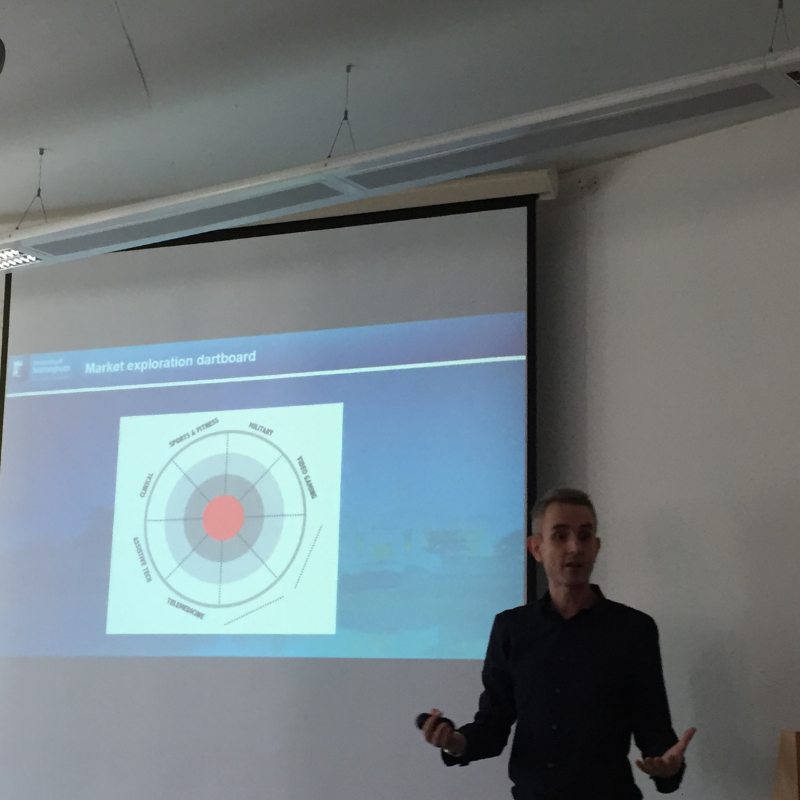Today I attended the Ingenuity Breakfast Event at University of Nottingham entitled ‘Design Thinking to Transform Your Business’ which was delivered by Dr George Rice, Head of Commercialisation. This talk was a fascinating insight into how to evaluate ideas and solve problems using a defined process. George confirmed universities are measured on the impact of their research and as such are increasingly focused on evaluating the practicality of an idea and the return on investment it will deliver.
George talked through the two stages of the process: Ideation and Prototyping.
Ideation
Ideation is the process of refining the problem and examining different solutions. George recommended allocating half a day or a day, making sure the right people were involved and having a facilitator to collect ideas and provide the energy. The group should include a variety of stakeholders from different backgrounds including end users, sellers, third parties, team members and experts. The idea or the technology should be demonstrated so everyone has the same understanding. Then, using a ‘dartboard’ mapping potential uses (see photograph above), encourage everyone to write their ideas on sticky notes and place on the board. All ideas are encouraged at this stage no matter how practical.
Once this stage is complete, the ideas are then evaluated for their feasibility to give a shortlist of ideas for further, more detailed consideration. Ideas can be voted on by the group to narrow them down. Once this is done, the ideas are explored to discuss how much development work would be needed and what could be the potential return on investment. The ideas are then ranked in terms of value and speed to market so the best can be taken to the next stage.
Prototyping
It was emphasised that a prototype should be early, ugly and often. The concept of a prototype is that it is a working 3D model but that does not have to be the case; even a drawing will help to explain the concept as part of the validation process to allow feedback into the design process.
The concept of constantly iterating came over very strongly. The advice is to begin early, change the prototype as you go, even in front of your users. Don’t aim for perfection – there is no such thing in the process. Do just enough, don’t waste resource and make sure you record your test: anything not recorded, didn’t happen.
One important research point that was made was that what people say and what people do can be two different things and it is important to design research to get to the truth of what people want.
The University of Nottingham Ingenuity Breakfast Events always bring a fresh perspective to innovation and business and today was no exception. Dr George Rice showed there is a process and a rigour that should be applied to innovation and design. All businesses need to use their ideas to move forward and today's presentation showed how this can be done in a structured and organised way to deliver a beneficial result.

